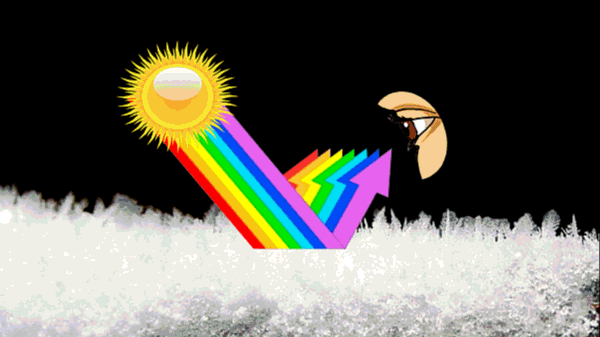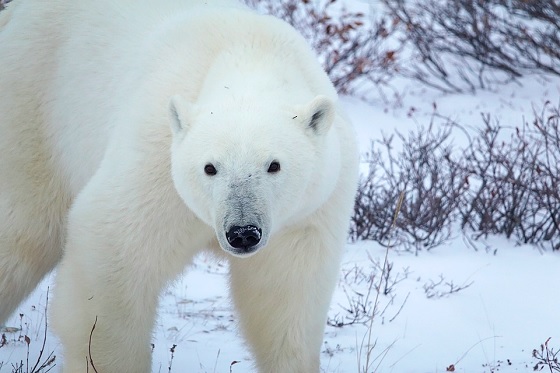Share on:
Why is snow white?
We know that the sun's white light is formed by a mixture of colors, as we can see by passing a ray of light through a prism or observing a rainbow, whose formation is due to the phenomena of refraction, reflection, scattering and separation that the ray of light undergo as it passes through raindrops.
Snow is made up of snowflakes, which are crystals of water frozen around a speck of dust. Snowflakes are made up of hundreds of tiny ice crystals that vary in shape and structure. As the flakes aggregate together, air is trapped in between them. It is this air that gives the snow its white color.

This air scatters light, i.e. it absorbs it and then emits it in all directions. Air is composed of oxygen, nitrogen and noble gas molecules and also of suspended particles such as dust, water and salt droplets and crystals.
When one of these tiny ice crystals deflects the light, the beam of light encounters other ice crystals in the pile of snowflakes that also deflect the light, and so on. The process continues until the light is reflected off the pile of snow, rather than passing straight through it to the ground.
Thus, the air bubbles trapped in the snowflakes, manage to disturb the travel of light, and make it bounce back and forth, returning waves of all colors to our eyes. And since the sum of all the colors of light results in white light, we see the snow of white color.

It should be noted that some wavelengths of light are absorbed by snow, even more so when impurities, such as dirt or urban grime, are present. However, with fresh, pure snow, most of the light waves are reflected, leaving everything white.
Freshly fallen snow is white due to its high reflective power (about 80% to 90% of the incident solar radiation) caused by the continuous reflections of the light that reaches it in the air bubbles trapped in the snow, and located in a very thin layer near the surface of the snowpack.

If we were to achieve a pure freezing of water, we would obtain transparent ice, something that does not usually happen, so the air bubbles are trapped in this transformation and will have the function of prisms, giving rise to a multitude of reflections causing all the colors of the visible spectrum to escape, making the ice white, which will be more intense the more reflection occurs, that is, the more air bubbles are trapped.
The white color of the foam of a beer has the same origin. The small air bubbles that are trapped in the foam, reflect the light multiple times and all colors, from red to violet, escape, so that the light we see is white light.
The same effect also occurs, for example, with the fur of polar bears. Their coat is not snowy, but transparent. It is the air trapped between the hairs that gives it its white color by diffusing the light as in snow.

Sometimes snowy mountains acquire a dark brownish hue, due to the color of the snow that has formed on condensation nuclei of clayey type or sandstone that have that hue. In some high mountain locations it has also been seen that the snow acquired a reddish hue due to microalgae called Chlamydomonas nivalis.
The albedo of snow
This white coloration of snow helps us to maintain the Earth's temperature thanks to its reflective power, which contributes significantly to the albedo of our planet, which is the proportion of solar radiation returned to space by reflection and is one of the parameters that most influences the evolution of the global climate. In the case of freshly fallen snow, whose crystals are still pristine, albedo can reach a value of 90%. The current seasonal decrease in albedo at the poles is one of the causes of human-induced global warming.
🥇 Find out more:
✅ Why is snow white when ice is transparent?
✅ Wilson Bentley, the first snowflake photographer

